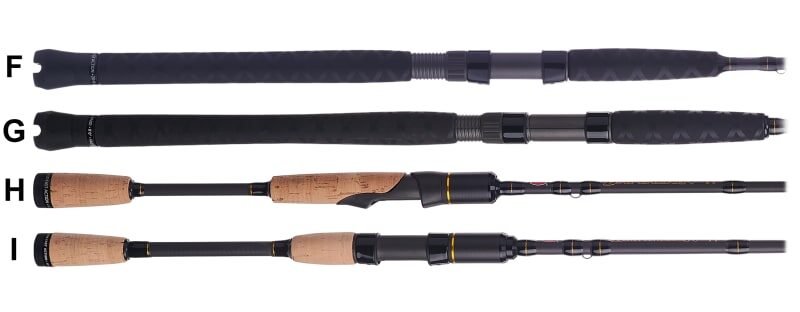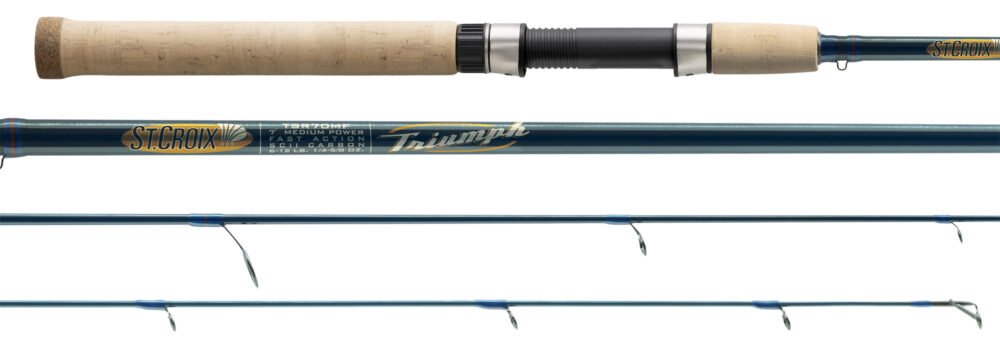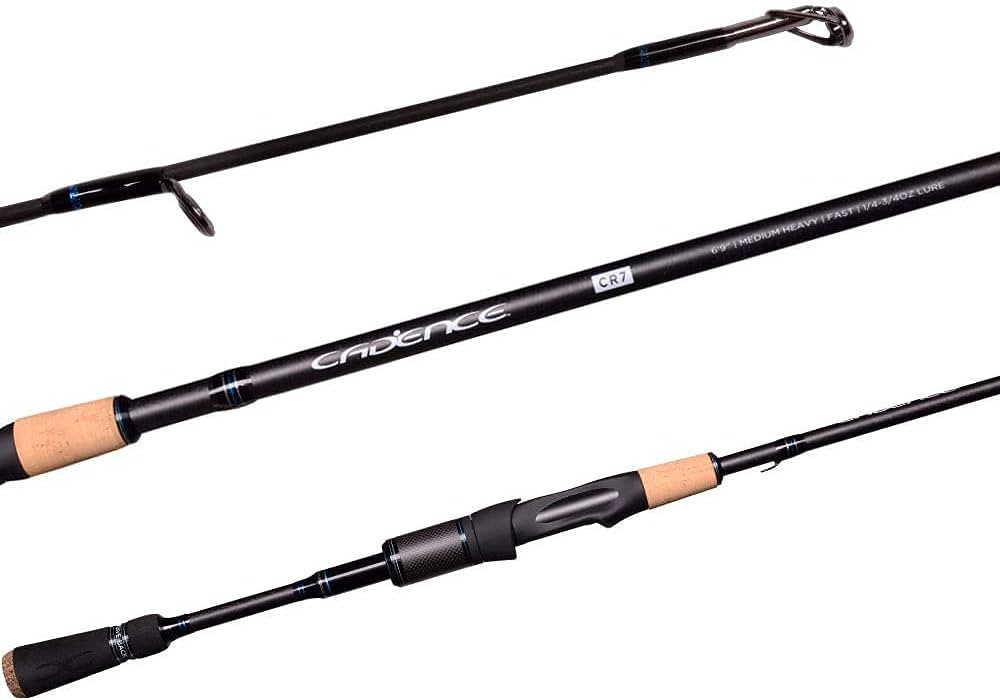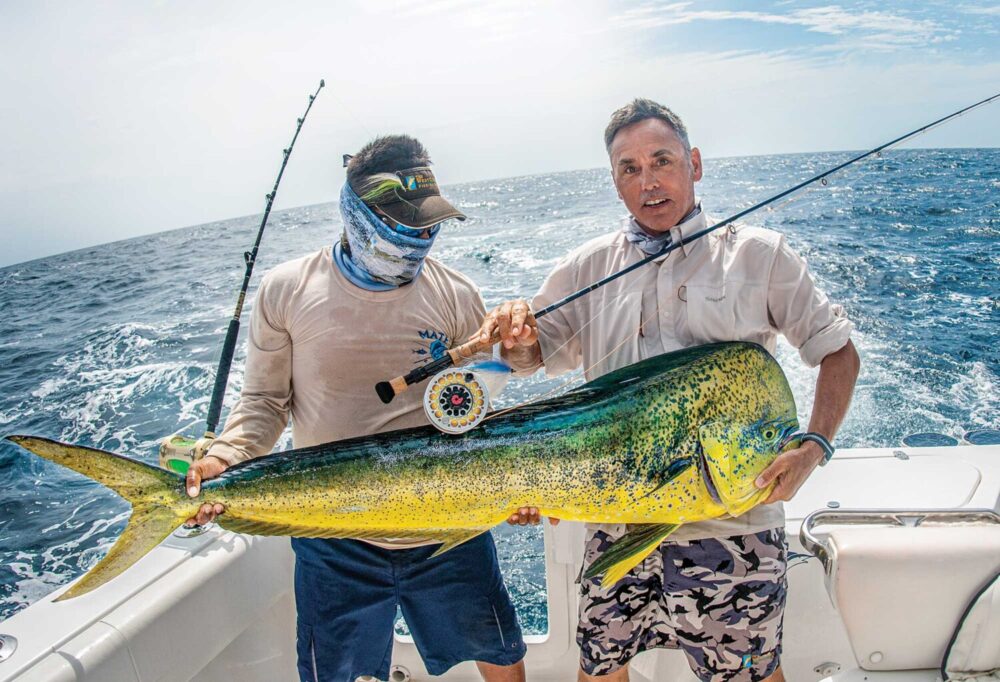Choosing the right saltwater fishing rod can improve your catch rate and make angling more exciting. You need to verify which material is the most efficient, what rod’s action and strength would work best with fish you are planning to catch, and what is the best length of a saltwater fishing rod. Explore your options, considering your needs and budget.
1. Choose the Right Material
One of the things you need to consider while choosing a saltwater rod is the material it’s made of. You have three options: graphite, fiberglass, and a new-generation composite.
Fiberglass is a very popular material for saltwater fishing rods as it’s strong, flexible, and durable. Thanks to its strength, it can easily resist rough seas or uneasy treatment on a boat. Unfortunately, it can be too heavy for some. Its sensitivity is also a bit small, and because of that, inexperienced anglers might not notice subtle bait pickups.
Rods made of graphite have smaller diameters and are much lighter. Additionally, they are highly sensitive, so it’s easy to notice strikes and pickups. However, they might be more fragile and prone to damage. If your rod is not secured properly on the boat, or if it gets nicked during the action, it is more prone to break in damaged spots.
New-generation composites are a mix of graphite and fiberglass and are used in modern and powerful fishing rods. They have small diameters and are lightweight. They combine the durability and strength of fiberglass with the lightness and sensitivity of graphite.
2. Check the Rod’s Action
The action of a rod is determined by how far down from the tip the rod bends. It’s a very important factor in a rod’s performance. If you need good casting accuracy and want to catch a bigger fish with large baits, you should look for a fast to extra-fast action rod. Fast action means that your rod is quite stiff and bends only a bit at the tip.
If you need an extended casting distance and work with smaller lures and baits, a medium to slow action rod is the best choice. Slow-action rods bend farther down the length of the rod.
Perhaps you have already heard of parabolic action. Don’t mistake it for fast and extra-fast actions. This action loads up energy, giving you a chance for a longer cast, and under pressure, only the tip of the rod bends. In this situation, when the rest of the blanks stay firm, the rod can work powerfully on catching a fish. These types of rods are brilliant when you are catching bigger fish, such as blue runners, herrings, goggle-eyes, or menhaden.
3. Choose the Right Length
You should choose the action and the power of your rod based on the strength of the line and the type of fish you would like to catch with that rod. When choosing the length of the rod, you need to focus on its purpose.
Remember that longer rods have a better casting distance, but with shorter rods, you can enjoy better leverage. If you cast with 12-20 pound lines, your best choice would be a 7-foot, fast-action rod. For smaller lures or natural baits, choose the same features, but medium-action. If you want a better casting distance, try up to 7 and a half feet or longer.
If you do trolling or jigging, casting distance is not as important as power. In that case, picking a shorter rod is better. Most rods dedicated to trolling or jigging are 6 or 6 and a half feet long. You can also find shorter options in case you need even more power.
Planning to catch a big fish? Choose a 6-foot, medium-heavy rod with extra-fast action. Add 50-100 pound lines to it.
4. Quality and Price

Source: firstinsight.com
Of course, the other factor that plays an important role while picking a fishing rod is its price and quality. You should adjust your budget to your possibilities, but try not to compromise on quality. You can get some quality salt fishing rods at an affordable price.
Remember that the quality of your rod can not only improve your performance but is also responsible for its durability. When you get quality gear, you might actually save, as it will serve you for a long time, and you won’t have to constantly change your fishing tools.
3 Best Saltwater Fishing Rods:
Now that you know what to consider while choosing a fishing rod, let’s check some of your options. Larry Stark recommends these saltwater rods:
1. Penn Battalion II Inshore Spinning Saltwater

Source: basspro.com
This rod is very light, but also very powerful. It’s the best overall choice when it comes to inshore spinning rods. It has very good quality level, so it is durable and will serve you well and for a long time. It would be perfect to pair it with a braided line.
This rod is versatile, so you can enjoy it in various situations and catch different species with it. It has a sturdy cork grip that prevents your hand from slipping. It is tough, but also sensitive, so you can easily notice action around your bait.
As it is a one-piece rod, it’s not the greatest option for traveling anglers. If you don’t take care of the rod, the guides can bend quite easily.
2. St Croix Triumph Spinning

Source: tackledirect.com
This rod is of great craftsmanship, which isn’t surprising, considering St. Croix Triumph created it. It has decent casting distance, it’s light, and it has a great price, considering the quality.
The rod is fast action, and it has good accuracy in casting. However, it’s a choice for entry or mid-level anglers, and might not be satisfying to more experienced fishermen.
3. Cadence CR5 Spinning

Source: amazon.com
If you are looking for a great rod on a low budget – this is your best choice. This rod is strong but lightweight. The ergonomic reel seat makes it very comfortable. It allows for smooth and long casting.
You can get a two-piece model, which is good if you want to have a smaller rod, but the joints may become loose over time. The rod may feel a bit too stiff.
Summary
To pick a good quality fishing rod, take into account your personal needs and the species you want to catch. Consider the material, the action, and the length of your rod. And of course, don’t forget about good quality.












